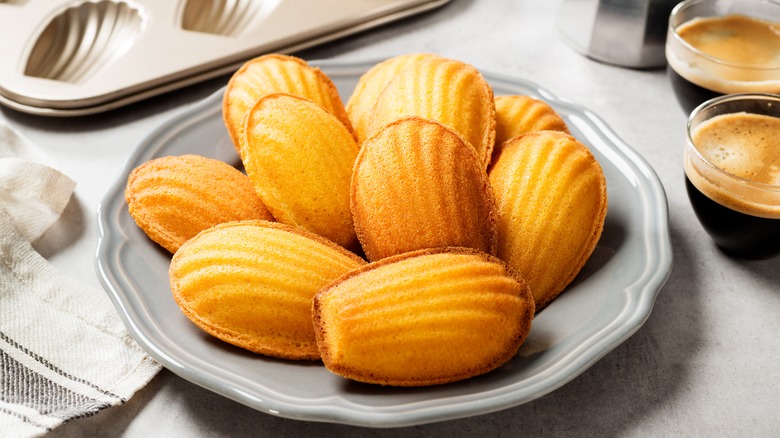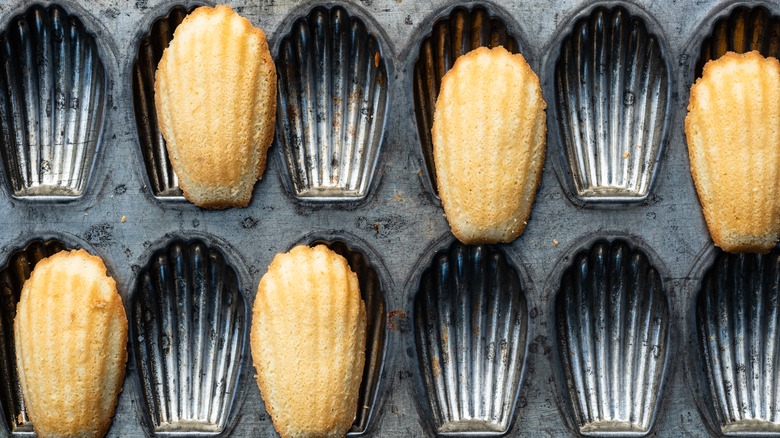The Baking Trick To Give Your Madeleines The Perfect Bump
Madeleines are some of the most elegant desserts. They're a spongy, scalloped cake that has become a hallmark of French culture (via The Culture Trip). Made of sugar, butter, flour, and eggs — all the delicious baking essentials — madeleines taste best when warm and even better when paired with coffee or tea.
Even the name "madeleine" sounds refined, though it's the shape that ultimately defines the pastry. The shell design distinguishes madeleines from other French delights and turns a seemingly simple batter into something fancy. Getting this shape, however, is easier said than done. According to BBC Good Food, once you make your madeleine batter, you have to spoon it into a specific madeleine tin: You need the right ingredients and tools – and the right technique.
But even with the right pan, your madeleines aren't quite guaranteed to look like, well, madeleines. Getting that perfect shell bump can be challenging. Luckily, there's one simple trick to increase your madeleine success rate — and it has nothing to do with technique and everything to do with temperature.
Jolt your madeleines with temperature shock
Keep your baking sheet hot and your madeleine pan cold. Yes, maintaining a contrast of temperatures is crucial in making those madeleine bumps. The Washington Post acknowledges that achieving a madeleine shell is challenging — but not a lost cause. To improve your pastries, you should set up a thermal shock, they recommend.
This advice means you should both heat up your baking sheet ahead of time and chill your madeleine batter in the pan. When the chilled and filled madeleine tray touches the warmed baking sheet, the contrast of temperatures will shock the batter. This temperature juxtaposition will cause your madeleines to jump up — and turn into perfectly curved shells.
Food 52 likewise endorses the culinary use of thermal shock, tracing its origins back to French chef, Lenôtre. Depending on your oven, you'll likely have to experiment with the right temperatures, although The Washington Post recommends 400 degrees Fahrenheit. But once you find a hot-cold contrast that works, you'll wind up with batch after batch of bakery-worthy madeleines. Just make sure your coffee stays hot — once your madeleines are ready, you won't want anything chilled.

